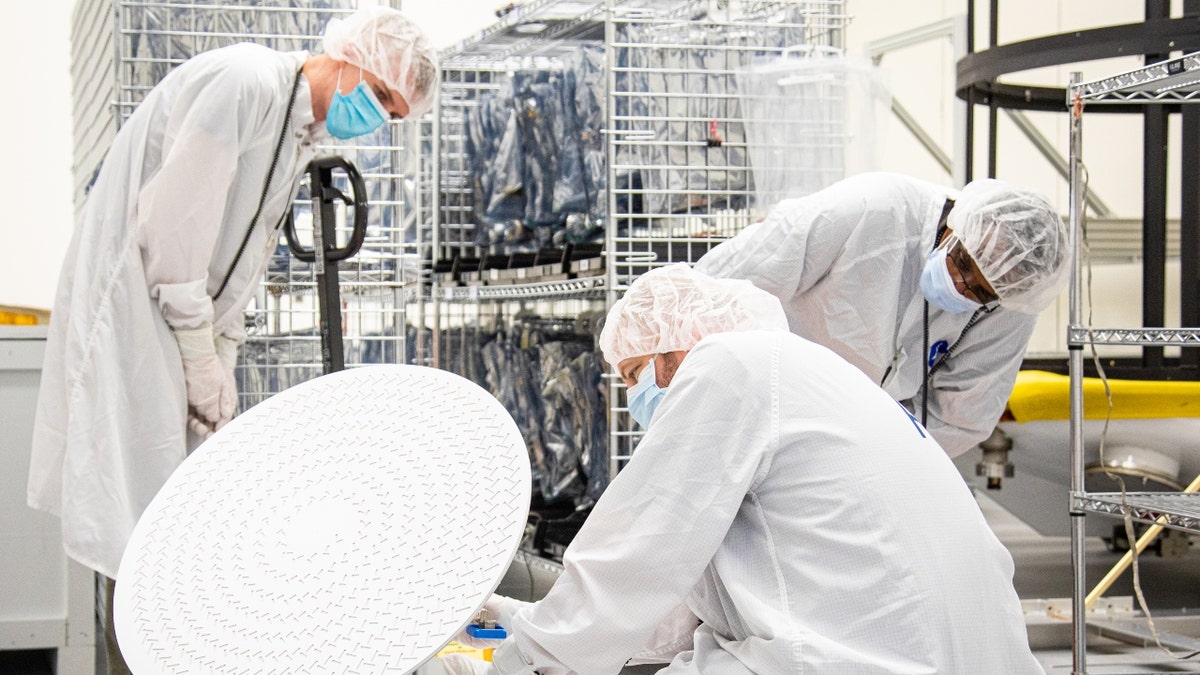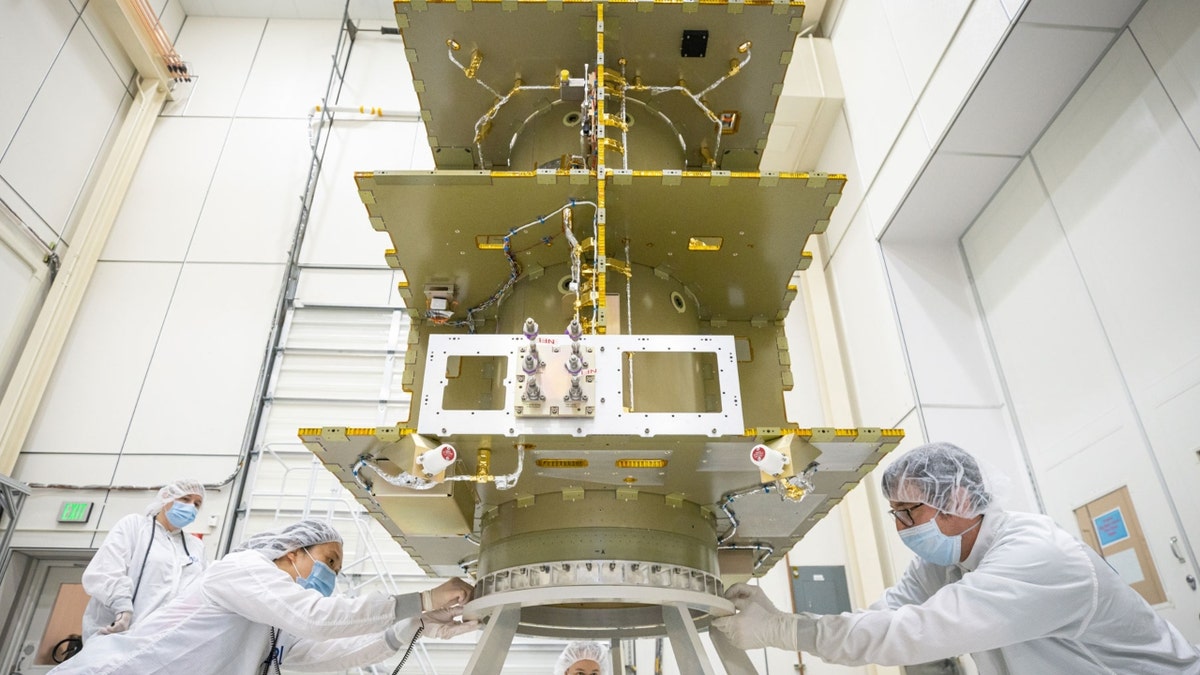Former NASA administrator shares ‘astonishing’ developments in space technology and exploration
Former NASA administrator Jim Bridenstine reveals new technology being developed on the International Space Station and reacts to stunning images of galaxies 13 billion lightyears away.
NASA will conduct the world's first mission to test technology for defending Earth against potential asteroid or comet hazards.
The agency's Double Asteroid Redirection Test, or DART, will impact the asteroid Dimorphos at 7:14 p.m. ET on Sept. 26.
The asteroid poses no threat to Earth.
DART will provide data to help Earth better prepare for an asteroid that could pose an impact hazard to Earth.
NASA A ‘GO’ FOR ARTEMIS LAUNCH NEXT WEEK

Illustration of NASA’s DART spacecraft and the Italian Space Agency’s (ASI) LICIACube prior to impact at the Didymos binary system. (Credits: NASA/Johns Hopkins APL/Steve Gribben)
Dimorphos is the smaller moonlet asteroid of the binary asteroid system Didymos, according to the Johns Hopkins University Applied Physics Laboratory, which is developing and leading the mission for NASA.
It has a diameter of 525 feet and orbits the larger asteroid Didymos.
The DART spacecraft will impact Dimorphos almost head-on. The collision will shorten the time it takes the small asteroid moonlet to orbit Didymos by several minutes.

DART team members (from left) John Schellhase, Emory Toomey and Lloyd Ellis of APL inspect the radial line slot array (RLSA) antenna before installing it on the spacecraft. (Credits: NASA/Johns Hopkins APL/Ed Whitman)
NASA'S MOON ROCKET ARRIVES AT LAUNCH PAD FOR 1ST TEST FLIGHT
The timing of the impact was chosen to be when the distance between Earth and Didymos is minimized, to enable "the highest quality telescopic observations."
However, Didymos will still be approximately 11 million kilometers (about 6.8 million miles) from Earth and the impulse of energy that DART delivers to Dimorphos is low.

The DART team at APL has spent the last month installing the electrical harness and subsystems onto the spacecraft panels, as well as testing the spacecraft's avionics and the software for its Small-body Maneuvering Autonomous Real Time Navigation (SMART Nav) system. (Credits: NASA/Johns Hopkins APL/Ed Whitman)
NASA will cover the impact live on NASA TV and its social media platforms starting at 6 p.m. ET.
CLICK HERE TO GET THE FOX NEWS APP
DART launched on a SpaceX Falcon 9 rocket from California's Vandenberg Space Force Base in November.





















